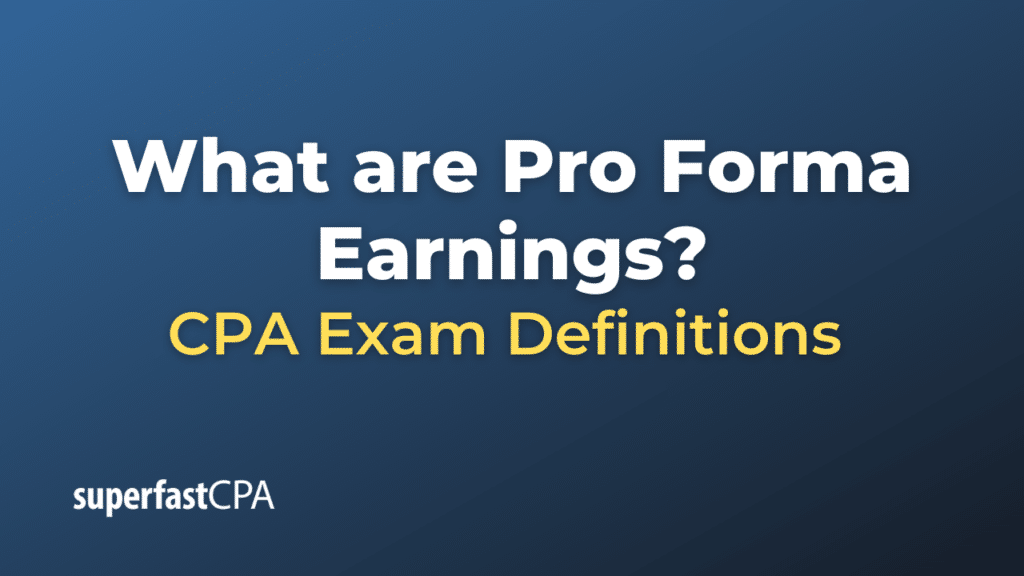Pro Forma Earnings
Pro forma earnings are a measure of profit that companies often use to present a view of their income that excludes unusual, non-recurring, or one-time transactions. The intent is to provide a clearer picture of the company’s ongoing operational performance.
This can include items like:
- Costs associated with restructuring or layoffs
- Profits or losses from the sale of assets or business units
- Changes in accounting methods or regulations
- Write-downs or impairment costs
- Costs related to mergers and acquisitions
- Legal settlements
While pro forma earnings can be a useful tool for understanding the underlying trends in a company’s operations, they can also be somewhat controversial because they allow companies to exclude certain expenses, potentially making their financial performance appear better than it actually is according to Generally Accepted Accounting Principles (GAAP).
For example, a company might report both GAAP net income and pro forma earnings in their earnings release. The GAAP net income includes all items, while the pro forma earnings exclude certain items that the company believes do not reflect its ongoing operations. If a company consistently reports higher pro forma earnings compared to GAAP net income, it might indicate that they have significant non-recurring expenses that could be important to understanding the company’s financial health.
It’s important for investors and analysts to understand what items have been excluded to calculate pro forma earnings, and to consider both GAAP and non-GAAP measures when evaluating a company’s performance.
Example of Pro Forma Earnings
Let’s say that a company, Alpha Corp, earned a net income of $500,000 in the past fiscal year according to Generally Accepted Accounting Principles (GAAP). However, during this year, the company also sold a piece of real estate for a one-time gain of $200,000. Additionally, it incurred $100,000 in costs associated with restructuring its operations.
Alpha Corp may decide to calculate pro forma earnings to provide a clearer picture of its ongoing operational performance. In this case, the one-time gain from the sale of real estate and the one-time cost of restructuring are excluded from the pro forma earnings calculation.
So, to calculate the pro forma earnings, you would start with the GAAP net income of $500,000, subtract the gain of $200,000 from the real estate sale, and add back in the $100,000 restructuring cost. This would result in pro forma earnings of $400,000.
By reporting pro forma earnings, Alpha Corp might argue it’s giving a more accurate picture of its recurring, operational profitability, without the “noise” of one-time events. However, it’s always important for investors to understand the details behind pro forma adjustments, as they can sometimes be used to make a company’s financial performance appear better than it actually is.













